Comodave
Moderator Emeritus
- Joined
- Jul 2, 2015
- Messages
- 22,456
- Location
- Au Gres, MI
- Vessel Name
- Black Dog
- Vessel Make
- Formula 41PC
We bought out current boat 2 years ago. I have been going through the boat and catching up on possible deferred maintenance. Last summer I was going to service the aftercoolers since it is pretty important. I removed the easy to get to cooler and tried to remove the core. No matter what I tried I couldn’t get the core out. So I pressure tested the cooler and reinstalled it. This spring I decided to buy one new aftercooler and put it on the port engine, the hard to access one. Cummins saiid if I did an emergency order it may come in within 100 days. They quoted $3,700 plus $153 for overnight shipping. I called each month to get status of the order. Finally on 22 May they said it was delivered to Saginaw Cummins on 11 May. I went to pick it up and they said it would be $5,200+. I was astounded. They said the cooler was $4,990 plus $370 for overnight shipping. I told them that the overnight shipping was bogus since they never called me to tell me it was there for 11 days. And that when I ordered it they quoted $3,700. After about 30 minutes they said they would delete the shipping and sell the cooler for $3,700. Ok. Good even if I had to make them see reason.
So I got home and disassembled the new cooler and lubricated it per Tony Athens recommendations. Cummins doesn’t lube the new cooler, why? Who knows but my new cooler was bone dry. I tried for about a week to get the core out of the old aluminum housing. 3 metals in very close proximity, what could go wrong? So today I took the cooler to a machine shop and had them press the core out. It was amazing how much pressure it took to get the core out. 13 tons, 26,000 pounds of pressure when it finally started to move. The old core didn't look great, a lot of corrosion on the bottom end which sits in water when not running. So I have a new cooler on the port engine and I am going to buy a new core for the housing. Then I will put the rebuilt cooler on my starboard engine.
Just a heads up if you have aftercoolers on your engine you may want to service it frequently. The first two photos are of one side, the heavy corrosion was from the lower end. The next two photos are from the other side. The fifth photo is the bottom end of the housing and the last photo is the top of the housing.
So I got home and disassembled the new cooler and lubricated it per Tony Athens recommendations. Cummins doesn’t lube the new cooler, why? Who knows but my new cooler was bone dry. I tried for about a week to get the core out of the old aluminum housing. 3 metals in very close proximity, what could go wrong? So today I took the cooler to a machine shop and had them press the core out. It was amazing how much pressure it took to get the core out. 13 tons, 26,000 pounds of pressure when it finally started to move. The old core didn't look great, a lot of corrosion on the bottom end which sits in water when not running. So I have a new cooler on the port engine and I am going to buy a new core for the housing. Then I will put the rebuilt cooler on my starboard engine.
Just a heads up if you have aftercoolers on your engine you may want to service it frequently. The first two photos are of one side, the heavy corrosion was from the lower end. The next two photos are from the other side. The fifth photo is the bottom end of the housing and the last photo is the top of the housing.
Attachments
-
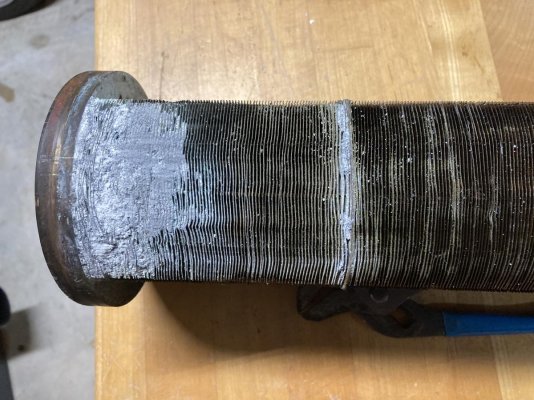 27042098-0F38-4E88-8586-DDA10BBFCFD1.jpg183.1 KB · Views: 412
27042098-0F38-4E88-8586-DDA10BBFCFD1.jpg183.1 KB · Views: 412 -
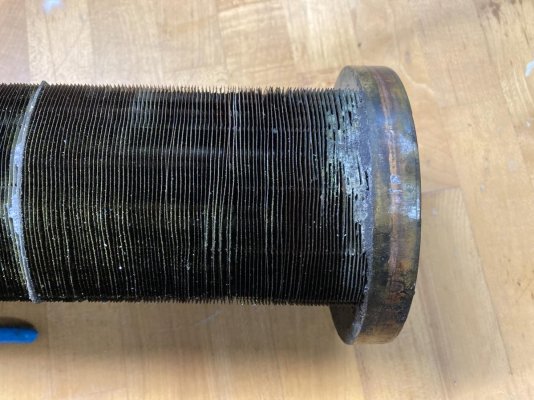 B03AA726-D262-4BA7-9815-32E5680273AF.jpg171.7 KB · Views: 77
B03AA726-D262-4BA7-9815-32E5680273AF.jpg171.7 KB · Views: 77 -
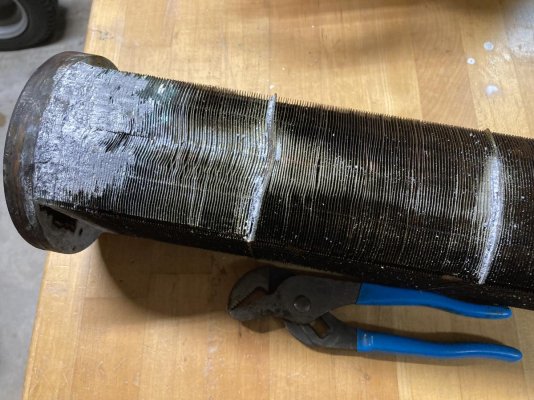 4FCA9B2F-1E11-42C9-9640-DC1363CC0784.jpg190.6 KB · Views: 81
4FCA9B2F-1E11-42C9-9640-DC1363CC0784.jpg190.6 KB · Views: 81 -
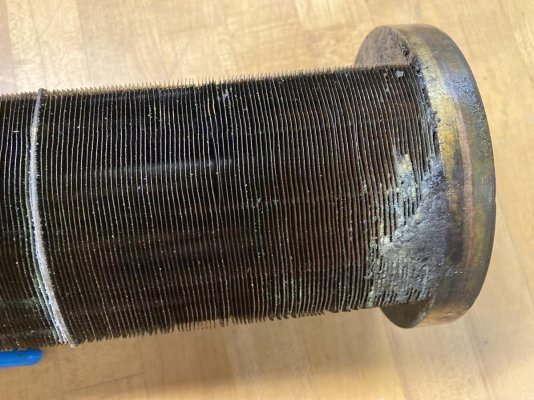 9FB7A05F-018F-4813-B402-8E07EA056D1F.jpg194.9 KB · Views: 83
9FB7A05F-018F-4813-B402-8E07EA056D1F.jpg194.9 KB · Views: 83 -
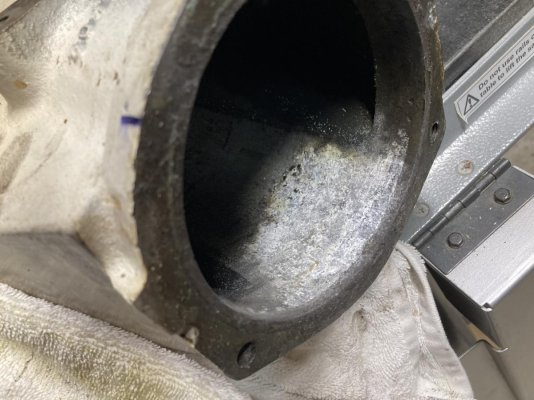 04316F87-61DF-4991-BB91-EAA259C13D70.jpg132.7 KB · Views: 85
04316F87-61DF-4991-BB91-EAA259C13D70.jpg132.7 KB · Views: 85 -
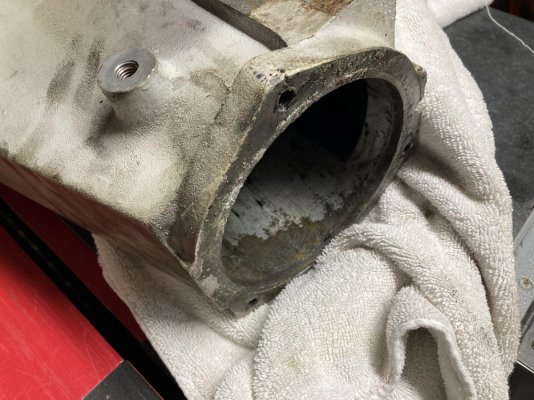 9D8BACB5-1DC3-479F-AE35-7727FAD1398C.jpg180.9 KB · Views: 84
9D8BACB5-1DC3-479F-AE35-7727FAD1398C.jpg180.9 KB · Views: 84


